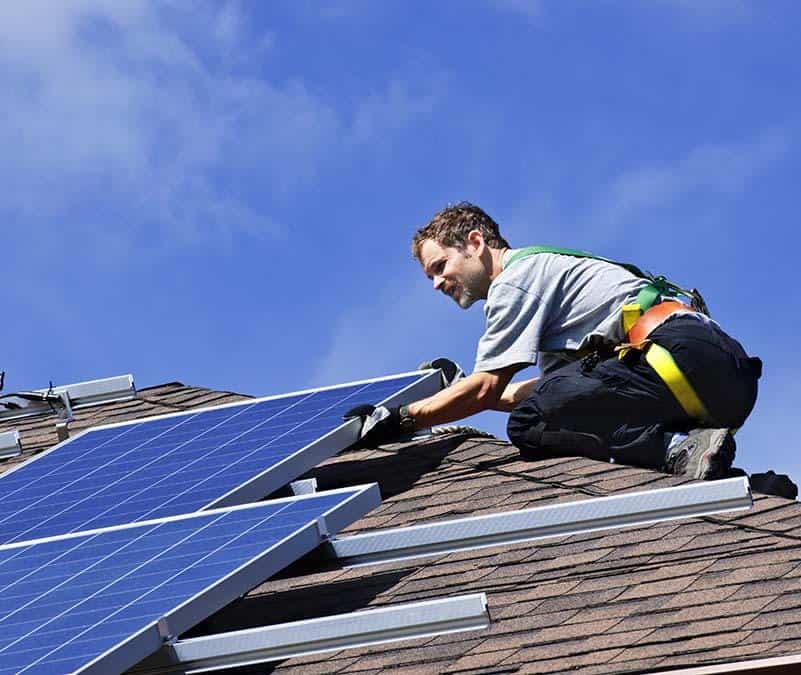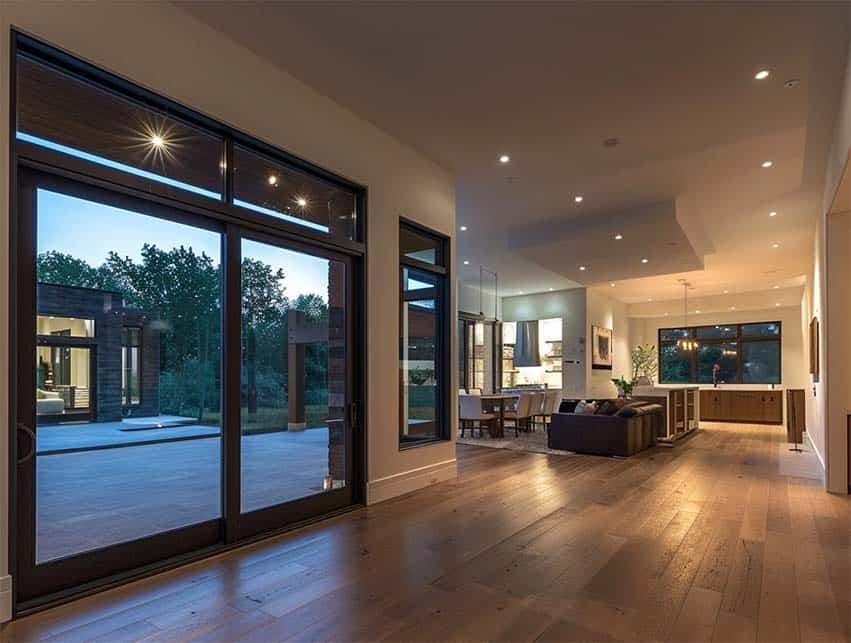Solar Installation: What Power Do You Need to Generate?

3 simple models to calculate the optimum size of our solar array
All Star Electric is a residential electrician and a professional solar installer in San Antonio, TX. One of the top questions homeowners ask us when they start planning a solar installation, is this: what kind of power do we need to generate to power our home without risking falling short?
We present here several models to calculate the quantity of electricity theoretically generated by a solar installation. The models involve multiple factors, including:
- efficiency of the solar panels
- amount of sunlight the location receives
- angle and orientation of the panels, and
- surface area of the solar array.
This article presents 3 versions of the model, each successive version being more complete than the previous one.
Important: As solar installers, we need to be very accurate when we do our power calculations, and we take into account an even larger number of factors and values than the 2nd and 3rd models. For this reason, we need to state that these 3 models will only help our readers approximate the quantity of power generated by a model solar installation.
Model 1: A simple power output calculation for a solar installation
This model is the simplest. It doesn’t take into account factors like shading or weather, and only outputs a rough estimate of the power theoretically generated by a solar installation. However, it is still useful to get a general idea of what to expect.
It is based on 3 factors:
1. Solar Panel Efficiency (E): This is the efficiency of the solar panels you will be using. It is usually given as a percentage. For example, a common solar panel efficiency is around 20%.
2. Sunlight Hours (S): This is the average number of hours of sunlight your location receives each day. This can vary greatly depending on your location and the time of year. Note that the term “location” does not specify if the installation is on your roof or somewhere on the ground of your property.
3. Solar Panel Area (A): This is the total area of your solar panels, in square meters. You can calculate this by multiplying the width and height of each panel and then multiplying by the number of panels. You could do this calculation in square feet, but the reality is that most solar panels are built in China and the Chinese use the metric system, not the imperial system. If you search for panels on the web, you are likely to find data measurements in square meters rather than square feet.
Model Formula
The formula for this model is:
Power Output = E * S * A
Example: Let’s say you have solar panels with an efficiency of 20%, your location gets an average of 5 hours of sunlight per day, and you have 10 panels each of 1.6 square meters. The power output would be:
Power Output = 0.20 * 5 * (10 * 1.6) = 16 kWh per day
KiloWatthours/day (or thousands of watt-hours per day) is your power unit.
Now, let’s work on a more accurate model, with additional parameters.
Model 2: A more complex power output calculation for a solar installation
This model is a bit more sophisticated. It uses 5 factors to obtain a more precise calculation of the theoretical energy output of a solar installation. For this new example, we will use the same values as those used in Model 1.
1. Solar Panel Efficiency (E): As above.
2. Sunlight Hours (S): As above.
3. Solar Panel Area (A): As above.
4. Panel Tilt and Orientation (T): This is a factor that represents how well your panels are oriented towards the sun. It’s a value between 0 and 1, with 1 being “perfectly” oriented.
A perfectly oriented installation would follow the sun along its travel throughout the day, which means that the panels would be mounted on a motorized ball capable of tilting and rotating the panels based on the position of the sun on the horizon.
5. Climate Factor (W): This is a factor that represents the average impact of weather on your solar power output. It’s a value between 0 and 1, with 1 being perfect weather.
Typically, perfect weather is construed as maximum sun exposure during the sunniest season of the year.
Model formula
The formula for this model is:
Power Output = E * S * A * T * W
Example: Let’s use the same values as for Model 1, but add a tilt and orientation factor of 0.9 (since the panels are well-oriented but not perfectly) and a weather factor of 0.8 (to account for some cloudy days):
Power Output = 0.20 * 5 * (10 * 1.6) * 0.9 * 0.8 = 11.52 kWh per day
Impact of the type of solar panels installed
Before we introduce the 3rd version of the model, we need to cover the various types of solar panels that can be used in a solar installation.
There are basically 3 types of commercially available solar panels (source: EnergyUsage.com). Each type has its own energy efficiency coefficient, expressed as a percentage.
1. Monocrystalline solar panels: These are the most efficient, with efficiencies often over 20%. For the simulation below, we will use an efficiency coefficient of 22%.
2. Polycrystalline solar panels: These panels are less efficient than monocrystalline panels but can be more cost-effective. For our simulation, we will use a coefficient of 17%.
3. Thin-film solar panels: These panels are less efficient but can be a good choice for unorthodox roof styles. For our simulation, let’s use a coefficient of 11%.
Keeping the same values as before, let’s use Model 2 to calculate the approximate power output of our solar installation using the 3 types of panels mentioned above.
Simulation 1: Monocrystalline Solar Panels
Power Output = 0.22 * 5 * (10 * 1.6) = 17.6 kWh per day
Simulation 2: Polycrystalline Solar Panels
Power Output = 0.17 * 5 * (10 * 1.6) = 13.6 kWh per day
Simulation 3: Thin-Film Solar Panels
Power Output = 0.11 * 5 * (10 * 1.6) = 8.8 kWh per day
As you can see, the theoretical output of Installation 1 is almost twice as much as that of Installation 3.
This shows you that the type of solar panels used in your solar installation matters very much. This choice will directly impact the amount of energy you can generate and use in your home without getting back to the grid to draw more power.
Now, we will present our 3rd calculation model.
Model 3: Power output calculation of a solar installation – 7-factor model
This is a more complex model that takes into account additional factors such as:
- Prevalent local weather conditions
- Tilt and orientation of the solar panels
- Efficiency degradation over time, and
- System losses due to inverter efficiency, wiring, and dust or dirt on the panels.
Let’s list all the factors:
1. Solar Panel Efficiency (E): The efficiency of the solar panels, given as a percentage.
2. Sunlight Hours (S): The average number of hours of sunlight the location receives each day.
3. Solar Panel Area (A): The total area of the solar installation, in square meters.
4. Panel Tilt and Orientation (T): A factor representing how well the panels are oriented towards the sun, with 1 being perfectly oriented.
5. Climate Factor (C): A factor representing the impact of the local climate on solar power output, with 1 being an ideal climate.
6. Efficiency Degradation (D): The annual rate at which the panels’ efficiency decreases, given as a percentage.
7. System Losses (L): The percentage of power lost due to factors like inverter efficiency, wiring, and dust or dirt on the panels.
Model formula
The formula for this model is:
Power Output = E * S * A * T * C * (1 – D) * (1 – L)
Example:
We will consider a solar installation in San Antonio, TX, as our city is known for its sunny climate and the number of sunny days per year. In this example, we will use the efficiency coefficient of monocrystalline solar panels (22%).
1. Solar Panel Efficiency (E): Monocrystalline panels have an efficiency of about 22%.
2. Sunlight Hours (S): San Antonio gets about 7 hours of sunlight per day on average.
3. Solar Panel Area (A): We have 10 panels each of 1.6 square meters, for a total area of 16 square meters.
4. Panel Tilt and Orientation (T): The panels are well-oriented towards the sun, so we’ll use a value of 0.95.
5. Climate Factor (C): San Antonio has a great climate for solar power, so we’ll use a value of 1.
6. Efficiency Degradation (D): The efficiency of monocrystalline panels decreases by about 0.5% per year.
7. System Losses (L): Let’s assume system losses of about 10%, mainly due to dust.
Plugging these values into our model gives:
Power Output = 0.22 * 7 * 16 * 0.95 * 1 * (1 – 0.005) * (1 – 0.10) = 20.57 kWh per day
Calculator for your solar power output
We created this calculator based on the 7-factor model above to help you figure out the total power output of your future solar array. Playing with the numbers, you can calculate how many square meters of panels you need, considering all the other factors.
Your household power usage
Now let’s look at your utility bill over a year, and average out your household daily energy consumption over a season to find out how much energy your home needs during a season.
In San Antonio, TX we tend to have a long summer season (6 months), a short cold season (2 months), a relatively regular springtime (2-3 months), and a relatively short fall season right before the cold weather hits. So we would average out our energy usage over these specific periods to get a better idea of how much power our household would draw during these various periods.
Then using either one of the 3 models with inputting our local values, we would get a good idea of the size required for our solar array to live “off the grid”. Obviously, you won’t live off the grid with a solar installation: you would technically still be hooked up to the grid. Your installation will send back some power into it during the sunniest season, and draw from the grid during the bad days. But you would certainly be mostly self-reliant in terms of energy generation throughout the year.
Last but not least: these models have limitations
Solar installers like All Star Electric use more complex models. with more factors and more input data. We also take into account your specific geographic situation to calculate the theoretical load of the solar installation your household will need. For instance: is your home surrounded by tall trees that project shadows on your roof during the day?
It is the job of our trained solar technicians to perform all the calculations and advise you about the technical possibilities and options your situation offers.
A solar installation makes sense in our region
As licensed professional electricians, we understood decades ago the potential of solar in our region. At the time, solar panels were not very efficient, and the grid was not set up to receive the energy produced by solar installations.
For years, we monitored the technological progress made by solar array manufacturers. When it became clear that households would directly benefit from drawing part of their daily power usage from a solar installation vs. using the grid 100% of the times, we invested into training technicians to perform residential power conversions at the highest level of workmanship.
Realistically, the power grid and conventional energy sources will remain necessary to provide sufficient power to our cities and industries for the next 30-50 years. We love green energy and believe in its future in all forms (not just wind and solar), but the transition from oil and coal to renewables can only be progressive. We have seen a clear illustration of this during the great cold of a few seasons ago. The time is right to pursue this transition, however. As the saying goes: “The best time to plant a tree was 25 years ago. The next best time is today.”
With the help of government incentives, solar has become an economically viable option for households. As solar panel and battery technologies continue to progress, solar installation will be retrofitted with more efficient production and storage features. But there is already much to gain for a household budget in going solar as soon as possible.
Call us to make a no-commitment appointment at (210) 391-0274.
Additional resources
All Star Electric has an A+ Rating with the San Antonio BBB
All Star Electric is a member in good standing of the San Antonio Chamber of Commerce





























